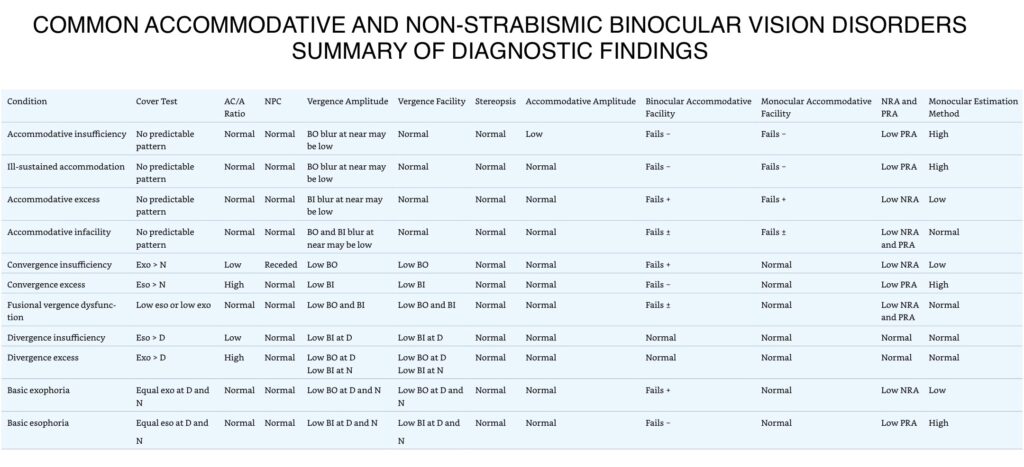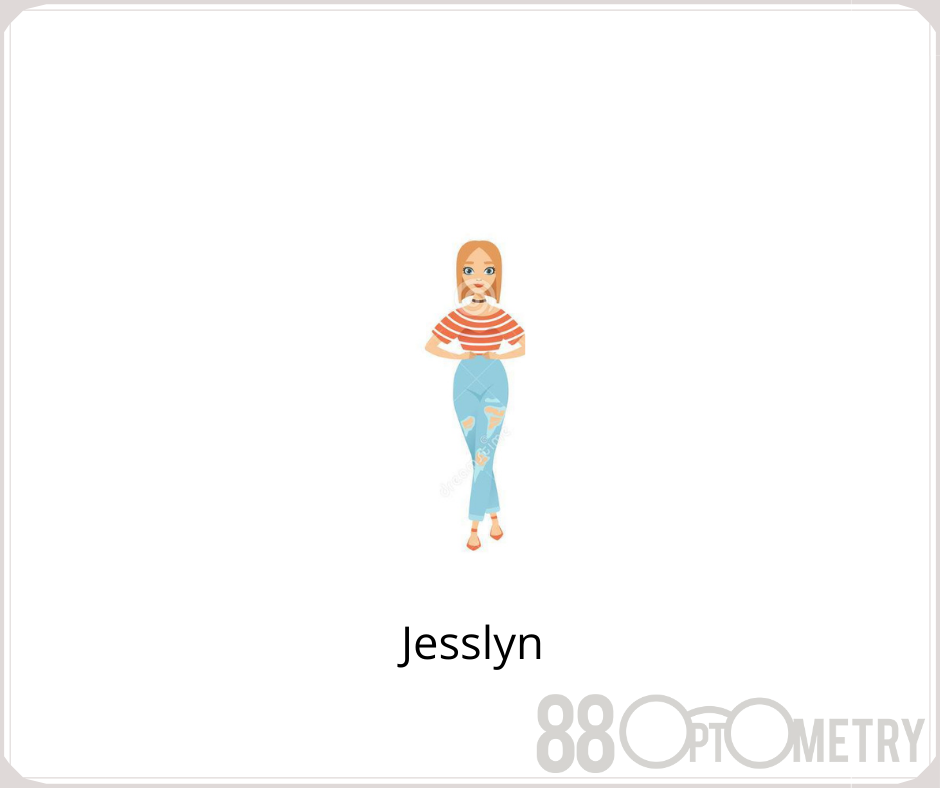Jesslyn (F/18) came for eye examination, vision with existing glasses is fine seeing far & near.
Vision without glasses/Unaided vision
R: 6/45
L: 6/45 (better)
Vision with existing glasses
R: -3.25 (6/6)
L: -2.50/-0.25×160 (6/6-)
Examination shows: (Delay Fogging)
R: -3.00 (6/6) (+1.00 blur lens test 6/12-) [R: right dominant eye]
L: -2.75/-0.25×160 (6/6) (+1.00 blur lens test 6/15-2)
Near: +0.75
Other assessments show:
Examination of Eye Alignment/Vergence (Cover Test)
NMD @Distance
small EP, fast recovery @Near
(normal value: orthophoria/NMD-No Movement Detected or small XP, fast recovery)
EP = Esophoria is misalignment of the eye, eye is deviated inwards
XP = Exophoria is misalignment of the eye, eye is deviated outwards
Examination of Eye Alignment/Posture (Howell Card) by 6^ Base Down on Right eye
Distance: 0 (patient reported target moves nasally upon alternating cover test)
Near: 0 (top arrow paces around 0, slightly on yellow as well as blue)
+1.00 Near: 2 XP (blue part)
-1.00 Near: 0 – 1 EP (yellow part)
(normal value: 0-1 EP or 0-3 XP @Distance; and 0-6 XP @Near)
EP = Esophoria is misalignment of the eye, eye is deviated inwards
XP = Exophoria is misalignment of the eye, eye is deviated outwards
NRA (Accommodation analysis – ability to relax accommodation) by plus lens
+1.50
(normal value: +1.50 to +2.50)
PRA (Accommodation analysis – ability to stimulate accommodation) by minus lens
-0.75
(normal value: -1.37 to -3.37)
MEM – Monocular Estimation Method (Accommodation lag – to measure accommodation response seeing near target)
R: +1.25
L: +1.25
(normal value: +0.25 to +0.75)
Accommodation Facility – ability to change focus: far to near or near to far (by Flipper +/- 2.00)
BE: 12 cycle per minit(cpm), difficult with minus lens(2nd lens)
R: 13 cycle per minit(cpm), difficult with minus lens(2nd lens) [better with both eyes]
L: 13 cycle per minit(cpm), difficult with minus lens(2nd lens) [better with both eyes]
(normal value: 1 cycle = 2 words read
Monocular or R/L: 6cpm to 16cpm
Binocular or BE-both eyes: 4cpm to 14cpm)
Fusional Reserves (Convergent/Divergent reserve stamina) by Prism Bar
Near, Base-In/Divergent, NFV: 12/10
Near, Base-Out/Convergent, PFV: 4/2
Distance, Base-In/Divergent, NFV: 10/8
Distance, Base-Out/Convergent, PFV: 10/30/20
(normal value: Blur/Break/Recovery)
Near, PFV: x/10-28/7-21
Near, NFV: x/7-19/5-15
Distance, PFV: x/4-18/5-9
Distance, NFV: x/4-10/2-6
[Scheiman – Adult Data]
AA (Amplitude Accommodation/Focusing – eye stamina/ability of eye to focus & sustain seeing near clearly) by RAF rule
R: 23 YO, 23 YO, 23 YO
L: 20 YO, 20 YO, 20 YO
(normal value: AA goes according to age; YO=years old)
NPC (Convergence – ability of eye to maintain a single clear near image) by RAF rule
TTN, TTN, TTN
(normal value: Break/Recovery in less than 10cm or to the nose, TTN)
Vergence Facility – ability to make rapid repetitive vergence changes (by Prism Flipper of 12Base Out & 3Base In)
Near: 8 cpm (slow to clear Base Out)
Distance: 8 cpm (slow to clear 12 Base Out)
(normal value: 1 cycle = 2 times clearing target
Distance: 15 cpm
Near: 15 cpm)
Interpupillary Distance = 6.0cm
Jesslyn initially did not report any complaint. After we have gotten all her eye findings, we prompt whether or not she sometimes sees blurry near vision especially after some time, she said yes.
She has Accommodation Insufficiency, AI.. we know from these findings:
- reduced AA
- low PRA
- difficult with minus lenses on accommodation facility (monocularly & binocularly)
- very low Base Out/PFV @Near
We prescribe added plus lens at near to support her accommodation.


